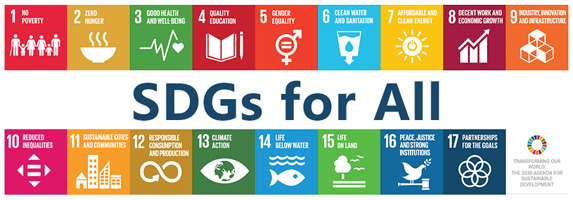Analysis by Fabíola Ortiz
WASHINGTON, D.C. (IDN) – Investing in forests has become the next big thing as an essential segment of the development solution, whether for meeting climate goals, coping with extreme weather, boosting livelihoods, greening supply chains or carbon sinking. However, the world has lost 50 soccer fields of forests every minute, every day, over the last twenty years.
“This is a great tragedy,” says Andrew Steer, President and CEO of the World Resources Institute (WRI), a global research organization that works in more than 50 countries. Managing forests has been difficult, he adds. Around one fifth of the global population (1.3 billion people) relies on forests for livelihoods.
According to the World Bank, about 350 million people live within or close to dense forests depending directly on them for their subsistence. And of those, nearly 60 million people – especially indigenous communities – are completely dependent on forests. CHINESE | JAPANESE | PORTUGUESE | SPANISH
“Forests are also critically important to the stability of our planet’s vital systems. They help regulate our water supplies, sustain agricultural production and protect infrastructure. And they help the planet tackle the impacts of climate change by absorbing CO2 from the atmosphere and enhancing the resilience of natural systems to climate shocks,” said World Bank Group Managing Director Sri Mulyani Indrawati.
Forests were a focal point in one special session during the IMF (International Monetary Fund)/World Bank 2016 Spring Meetings from April 14-17 in Washington D.C.
According to Indrawati, there is a growing global recognition of the critical role forests play in supporting sustainable development and lifting people out of poverty. The World Bank is the largest multilateral financier of the forest agenda. Between 2002 and 2015, the institution supported 300 forest related operations with US$ 15.7 billion.
“This is why forests were included in the Sustainable Development Goals (SDGs). The World Bank seeks to make sustainable management of forests an integral part of the global agenda. They are key pillar of our new climate change action plan. This is the momentum we are seeing for new and better pathway for forests,” he stressed.
World leaders and governments will sign the United Nations Climate Agreement on April 22, which includes an explicit call to nations to conserve and enhance forests and other biological carbon reservoirs. If governments representing at least 55 percent of the global annual carbon emissions ratify the Paris accord, it will enter into force.
Currently, forest and land use contribute only 25 percent of the total emissions reduction pledged so far by governments in their Intended Nationally Determined Contributions (INDCs) under the agreement.
Data released on April 21 shows that they could contribute much more, given their huge potential to act as carbon sinks, safely removing CO2 emissions from the atmosphere.
The study “Forests: The Bridge to a Fossil-Free Future”, by the Woods Hole Research Center – an independent research institute that investigates the causes and effects of climate change to identify and implement opportunities for conservation, restoration and economic development – show that with proper management, forests, particularly those in the tropics, could remove significant quantities of CO2 from the atmosphere, making it much easier to limit global warming to 2ºC.
A scenario of “aggressive management” of tropical forests would increase by ten to fifteen years the time available to eliminate fossil fuel use.
“We cannot succeed in fighting global warming unless we stop deforestation in the tropics. Protecting and managing forests not only make sense from the climate perspective, it is also smart for the economy. Forests are key economic resources and protecting them will increase resilience to climate change, reduce poverty, and help preserve invaluable biodiversity,” said Tone Skogen, the State Secretary of the Norwegian Ministry of Foreign Affairs. Norway is investing annually around US$ 400 million in rainforests.
In her opinion, without ambitious global action to tackle the loss of tropical forests, the 2ºC target is simply out of reach. By the second half of the century, the globe needs to achieve a balance between emissions and cutting greenhouse gas (GHG).
Reducing emission of deforestation could bring about one third of the GHG reductions by 2030 to keep in a 2ºC trajectory. Some countries like Colombia are showing to be deeply engaged in achieving a zero deforestation rate by 2020 and restoring million hectares.
Half of the Colombian territory is covered by forests, in which two thirds are in the Amazon basin. The deforestation figures in the past reached a fast pace of about 300,000 hectares a year, mainly due to the ongoing armed conflict in the country.
“It’s been five decades of conflict that affected deforestation in many ways, illicit drug production, illegal mining and displacement of people. We are putting a lot of emphasis on ending the conflict, it is going to be good for the environment and for the forest,” said Mauricio Cardenas, Minister of Finance and Public Credit adding that Colombia is at the forefront of the global debate when it comes to reducing carbon emissions and protecting the forests.
One of the main aspects of the peace talks with the guerrilla movement Revolutionary Armed Forces of Colombia (FARC) is precisely putting an end to deforestation and converting ex-combatants as forest workers. “One way to absorb those illegal groups is putting them in charge of protecting our forests, paying people to protect the forests as green guards.”
Another important actor that should be engaged in this process are indigenous communities. In Latin America, 40 percent of the forest is controlled by indigenous peoples.
According to the indigenous rights activist from Nicaragua, Myrna Kay Cunningham Kain, who is chairperson of the Center for Autonomy and Development of Indigenous People (CADPI), the amount of forests and territories controlled by indigenous peoples worldwide it is expected to double by 2030.
“If governments and private sector don’t work with the indigenous peoples in this issue, we will not be able to accomplish the goals. Conflicts arise when we do not participate, when the free prior and informed consultations are not very well implemented and when our leaders are criminalized,” declared Kain.
She belongs to the indigenous Miskito community of Waspam located on the banks of the River Wangki in Nicaragua. “For us, forest is our home, where we pray, it has spiritual and cultural value. We have a different perception of what forest means for indigenous peoples. We have the right to own and use our territories, it is in the international legislation.”
Forests owned and managed by indigenous peoples and local communities contain approximately 37.7 billion tons of carbon – 29 times more than the annual emissions of the world’s passenger vehicles. Secure rights to indigenous and community-held land protect against deforestation and can generate significant large-scale returns, says a new report released on April 21 by the Rights and Resources Initiative (RRI)
Only 21 INDCs out of 162 submissions, representing 13 percent of the world’s tropical and subtropical forest area, included clear commitments to implement community-based tenure or natural resource management strategies as part of their climate change mitigation plans or adaptation actions.
According to the study, this illustrates the “significant gap” between the recognition that securing indigenous peoples and local communities’ land rights is fundamentally important for achieving both sustainable development and climate change targets, and the willingness of states to implement needed reforms.
It is today a new vision in vogue of having the so-called “landscape approach” to manage forestry and at the same time reconcile with agricultural needs and recover degraded land, Miguel Calmon, Senior Manager, Landscape Restoration Knowledge, Tools and Capacity of the International Union for Conservation of Nature (IUCN) told IDN.
“It is a good thing to invest in forests. There are over 2 billion hectares of degraded land that were forest in the past and create currently no benefits for society. We need to convert those devastated areas into more productive ones generating environmental services. Nowadays we all agree that working together in a more integrated way will make us achieve common goals,” Calmon added. [IDN-InDepthNews – 21 April 2016]
IDN is the flagship of International Press Syndicate.
Photo: ‘Think Forest’ Panel during IMF/World Bank Spring Meeting. Credit: Fabiola Oritz.




